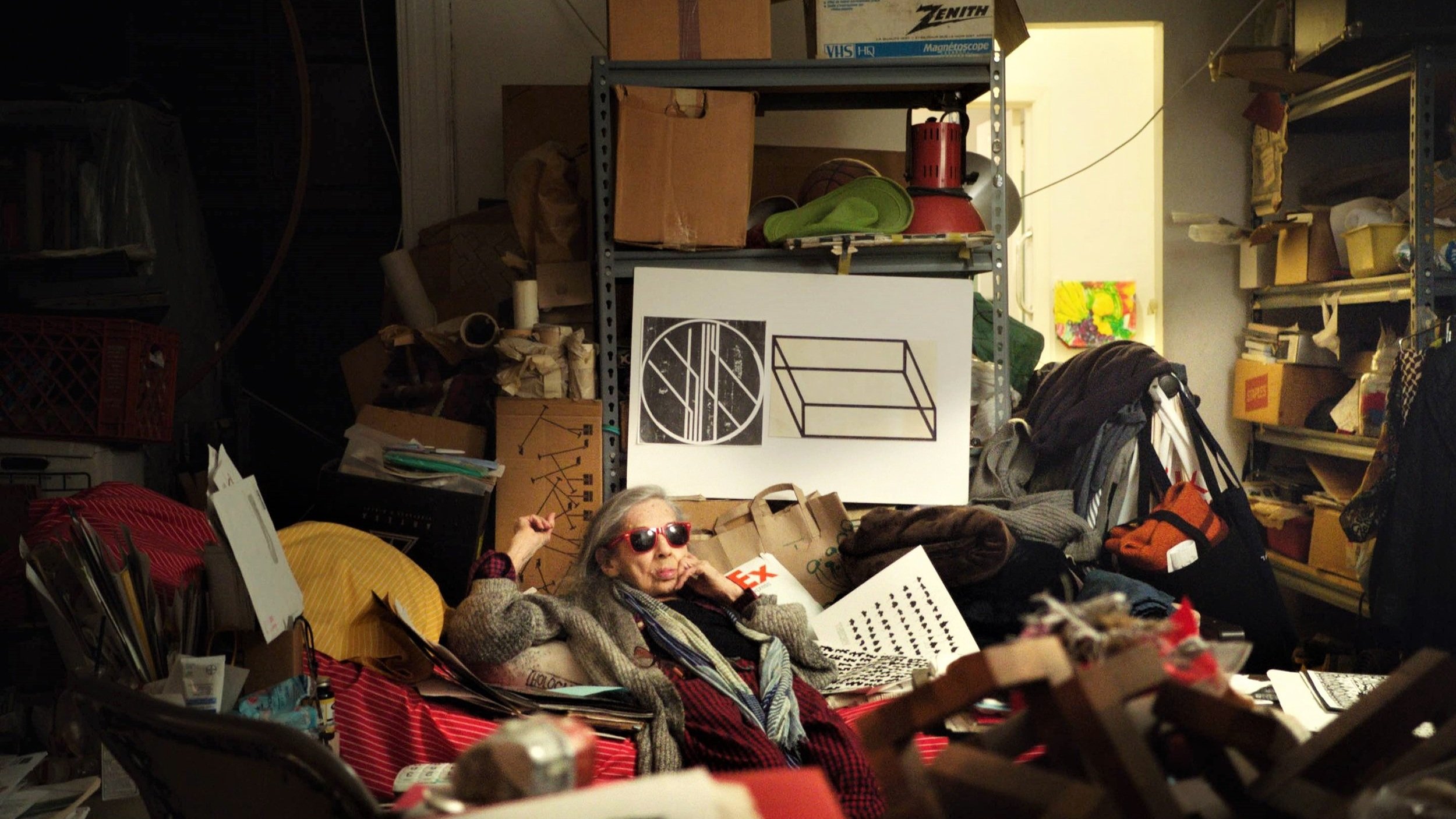Dreaming Walls: Inside the Chelsea Hotel
Recent times in New York’s legendary Chelsea Hotel provide ammunition for an adventurous, poetic and off-beat documentary.
To appreciate this piece by the Belgian filmmakers Amélie van Elmbt and Maya Duverdier, it is important to know first what it is not. Although filmed inside the famous building in Manhattan which became truly iconic in the 1960s, it is not a history of the Chelsea Hotel. It largely ignores giving any details regarding the first seven decades following its creation in 1884. Indeed, even when it engages with its age of greatest fame, the images of those who stayed there during that period are mainly represented by pictures of them superimposed over shots of the building today (it is no surprise that the most haunting of these projections is that of Marilyn Monroe). There is some archive footage that is brief (Patti Smith and Virgil Thomson among those glimpsed), some more generalised scenes from the past and on occasion we hear evocative soundtrack recordings (they include one-time resident Dylan Thomas reciting from his most famous poem). But, for the most part, this documentary recently filmed over some three years is centred on what was then the present state of the Chelsea Hotel: the construction work that was continuing and had lasted for a whole decade under a scheme to renovate it as a modern boutique hotel and the lives of those residents, mainly elderly, who had persisted in remaining as tenants.
If it is easy to describe what this film chooses not to offer, it is somewhat harder to pinpoint exactly what it does. Nevertheless, it is apparent from the start that the approach taken by Elmbt and Duverdier has a poetic sensitivity. As the camera explores the corridors of the hotel, it conveys a real sense of atmosphere matched by the music score of Michael Andrews. The chief focus is clearly on the long-term tenants, a number of whom become the principal figures in the film. Many of them are artists and the film is expressive of the hotel’s strong association, notorious or not, with people who in various ways led lives centred on art. If, in part, this is a portrait of artists in old age, there is an acute awareness on their part that the hotel has within it a sense of having been a home to artists. Furthermore, these vibes, inherent in the very walls, encourage these elderly people to live to the full, some still artistically involved and ready to attempt fresh projects.
Although the tenants feel that they are being pressurised to get out, the film places less stress on this persecution than on their spirited outlook. Nevertheless, the last scenes of the film touch on a bereavement and on the final years of Bettina Grossman who, in her nineties, was the hotel’s oldest resident but who died before the film opened. Yet, despite that, Dreaming Walls presents for much of its length an unexpectedly positive view of old age. Admittedly, some of the tenants are at odds with each other because there are those who welcome the transformation of the building and others who resent it. But, despite its condition at this time, there is an overall sense that this building still had a special life in it when the filming took place. Its reopening has now at long last taken place transforming the Chelsea Hotel in the process and to that extent it can be said that Dreaming Walls captures the end of an era.
Having adjusted to the character of this film, I found it sympathetic but, even so, not always satisfying. It is too ready to assume that the viewer is familiar with the hotel’s past history and not in need of any clarification. Thus, some figures from the past go unnamed and you might suppose that the shots of the aged Virgil Thomson were recent unless you happen to know that he died in 1989. That is all too typical. One especially striking example comes when video images from 1983 featuring a site-specific work, Dance of the Spirits, created for the hotel’s centenary by resident Merle Lister Levine are intercut with shots of a re-staging of a sort. This suggests a ballet of ghosts appropriate to the film, but no clear reference is offered regarding the origin of the piece. It is also the fact that the film rather too readily embraces its own flights of fancy as it blends the old and the new. But the various residents featured come over well and the piece does have a tone of its own which proves potent enough to hold it together – and that’s so even if there is limited development to what we see save for the residents getting older. This makes it entirely fitting that the closing dedication is "to all those who once stayed at the Chelsea and to their dreams".
MANSEL STIMPSON
Featuring Bettina Grossman, Rose Cory, Merle Lister Levine, Susan Kleinsinger, Steve Willis, Joe Corey, Zoe Serac Pappas, Nicolas Pappas, Skye Ferrante, Eugenie Sappho, Gerald Busby, Gina Healey, Pablo Martinez.
Dir Amélie van Elmbt and Maya Duverdier, Pro Hanne Phylpo and Quentin Laurent, Ex Pro Martin Scorsese and Lori Cheatle, Screenplay Amélie van Elmbt and Maya Duverdier, Ph Joachim Philippe and Virginie Surdej, Ed Alain Dessauvage, Julie Maas and Marie-Hélène Dozo, Music Michael Andrews.
Clin d’oeil Films/Basalt Film/Hard Working Movies/Les Films de l’oeil sauvage/Momento Film-Dogwoof Releasing.
80 mins. Belgium/France/Netherlands/Sweden/USA. 2022. US Rel: 8 July 2022. UK Rel: 20 January 2023. Cert. 15.


